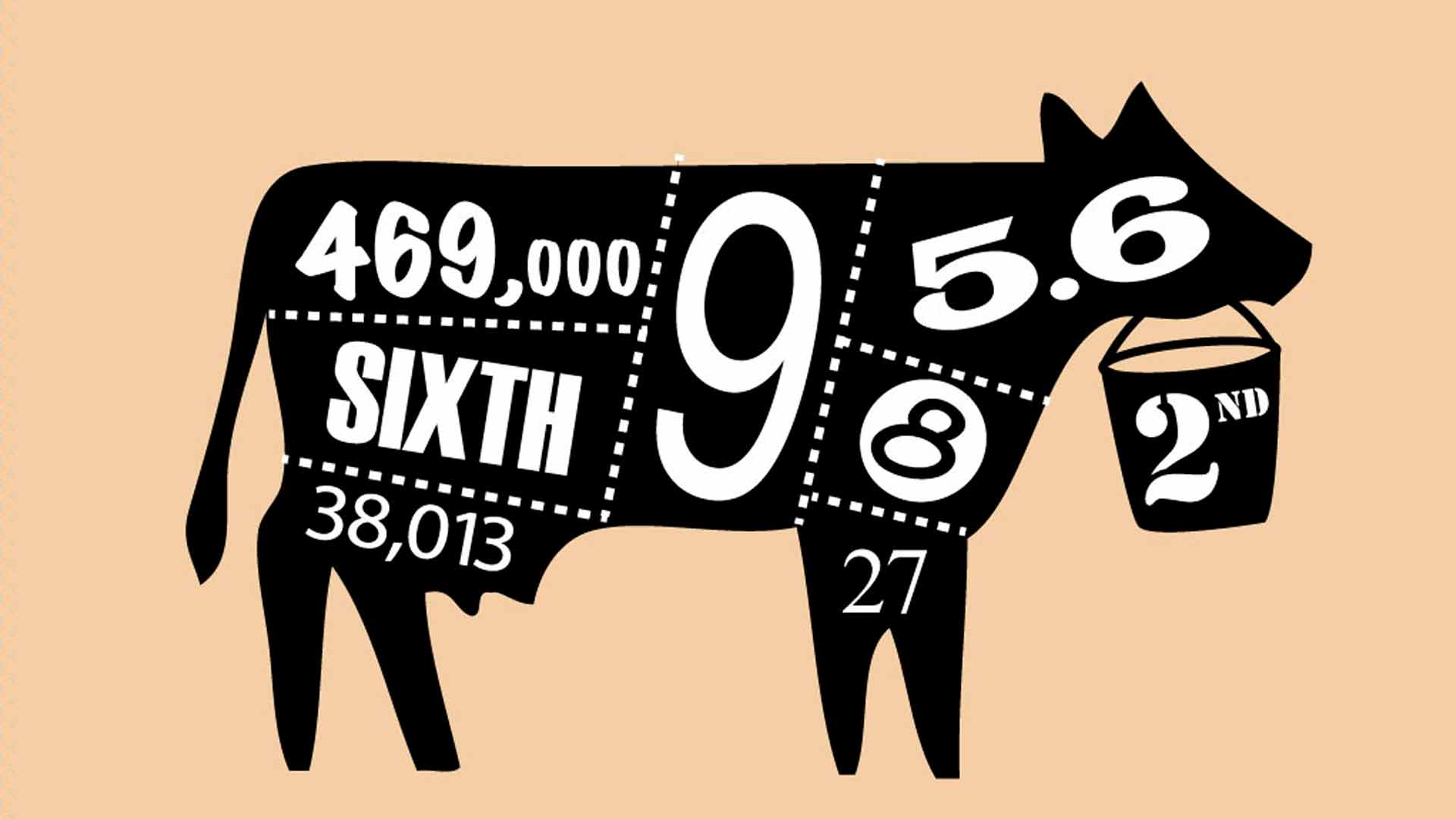AURI’s dairy research initiatives come at a time when the Minnesota milk industry is growing again, after a long period of decline.
The state’s dairy herd has increased for the last three years to about 470,000 cows, according to the Minnesota Department of Agriculture. Meanwhile, larger dairy states have seen their dairy cow numbers shrink.
Annual Minnesota milk production has increased about 2 percent per year for the past five years, says Bob Lefebvre, executive director of the Minnesota Milk Producers Association. Last year, Minnesota farmers produced 9 billion pounds of milk, up 3 percent from 2008.
Dairy is the state’s second largest livestock sector, after hogs, contributing a quarter of the state’s total livestock receipts, the ag department says.
In 2009 and the first half of 2010, low milk prices and the recession plunged Minnesota dairy farmers into “one of the worst — if not the worst — times ever,” Lefebvre says. “Yet, we have continued to see long-term investment.” In addition to adding cows, state dairy farmers have invested in new, modern facilities, such as free-stall barns and state-of-the-art milking parlors. “Minnesota farmers have been extremely resilient in this difficult period.”
The region’s dairy-processing capacity has also grown significantly in the last few years, Lefebvre says. First District Association in Litchfield, AMPI in Paynesville and Le Sueur Cheese Company in Le Sueur have expanded or are planning to expand, Lefebvre says. In the surrounding states, cheese processors in Milbank and Lake Norden, S.D., and Hull, Iowa have all increased their production capacity.
Other economic sectors are benefiting from dairy-farm growth, Lefebvre adds. Equipment companies, nutritionists, veterinarians, feed suppliers — all get a boost from a strengthening dairy industry, he says. “The infrastructure around dairy farmers has stabilized.” The total economic impact of Minnesota’s dairy industry tops $11 billion annually, the ag department reports.
In other signs of growing strength, U.S. dairy exports are on the rise. In May, exports reached the highest monthly total since May 2008, pushing 2010 dairy exports up 62 percent compared to a year ago, says Mary Higgins, vice president of dairy-ingredient marketing for the Midwest Dairy Association.
“Dairy has been through a rocky time for the last 24 months or so,” says Jen Wagner-Lahr, AURI dairy specialist, but she sees hopeful signs. “Minnesota is a good place to raise dairy cattle and produce dairy products.”
